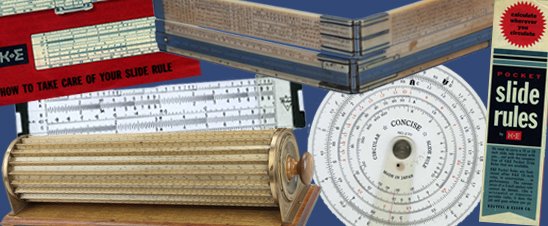This white plastic circular slide rule was made by Concise Company, Ltd., of Tokyo, Japan, for Pan American Airlines. The base has a D scale, and there are C, CI, A, and K scales on a disc that rotates atop the base. A clear plastic indicator is pivoted at the center.
- Description
-
This white plastic circular slide rule was made by Concise Company, Ltd., of Tokyo, Japan, for Pan American Airlines. The base has a D scale, and there are C, CI, A, and K scales on a disc that rotates atop the base. A clear plastic indicator is pivoted at the center. The center of the rotating disc is marked: CIRCULAR CONCISE SLIDE RULE (/) NO. 28 (/) MADE IN JAPAN.
-
The back of the object is light blue with a white logo of a globe and is marked: WORLD'S LARGEST AIR CARGO CARRIER (/) PAN AM (/) WORLD'S MOST EXPERIENCED AIRLINE. The instrument was received with a clear plastic sleeve, a black vinyl case, and an undated instruction manual. The case is marked: Concise (/) No. 28. In 1963, the rule was advertised as "a revolutionary new design concept."
-
Concise has specialized in circular slide rules, particularly for promotional distribution by other companies, since its founding in 1949. The company operated under the name Concise Co., Ltd., which appears on the instruction manual, from 1959 to 1966, hence the rough date assigned this slide rule. The donor, industrial engineer Richard Freeze, reported that he received the item as a promotional item distributed at a conference. For other Pan American promotional slide rules, see 1996.3029.01 and 1996.3029.02. For other slide rules by Concise, see 1985.0636.02, 1996.0141.01, and 2006.0173.01.
-
References: "Concise Corporate History," http://www.concise.co.jp/eng0731/history.html; Peter M. Hopp, Slide Rules: Their History, Models, and Makers (Mendham, N.J.: Astragal Press, 1999), 105; advertisement, Civil Engineering 33 (February 1963): 84; accession file.
- Location
-
Currently not on view
- date made
-
1959-1966
- distributor
-
Pan American Airlines
- maker
-
Concise
- ID Number
-
2003.0012.01
- accession number
-
2003.0012
- catalog number
-
2003.0012.01
